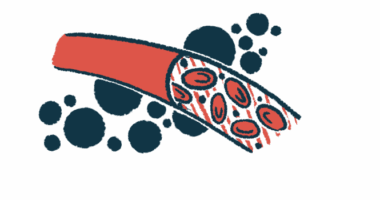Caregiver action plan for navigating school with Duchenne MD
Last updated Jan. 22, 2024, by Susie Strachan

Going to school for the first time is an important moment in a child’s life. The educational journey for a child with Duchenne muscular dystrophy (DMD) can be exciting but also challenging.
To smooth the academic path, as a parent or caregiver, you may find yourself taking on multiple roles, such as looking into whether the school is a good fit, collaborating with teachers and other school staff, and talking with other families of children with DMD about what they did to support their education.
Along the way, you’ll be your child’s biggest cheerleader, learn to advocate for their needs, and become a guiding force as they navigate the school years.
Setting up positivity
It’s common for children to feel a mix of emotions about school, including enthusiasm, curiosity, and even a bit of nervousness. Living with DMD adds another dimension to those first days.
DMD is the most common type of muscular dystrophy. It’s a progressive condition that causes muscle wasting and mainly affects skeletal muscles. It more commonly affects males than females.
While there isn’t a cure for DMD at this time, a number of treatments can help ease symptoms and slow or halt disease progression — including exon-skipping therapies and gene therapy.
Children with DMD may have challenges related to physical mobility like walking, fatigue, and, in some cases, cognitive function. About 1 in 3 people with DMD exhibit cognitive impairment or learning disabilities.
As a parent or caregiver, you can play a vital role in fostering a positive mindset toward learning and helping your child build confidence and resilience.
As a parent, initiating a meeting with your child’s teachers and all involved parties before the first day of school is an optimal way to discuss your child’s capabilities and challenges.
Other strategies include:
- continuing the dialogue with your child’s teachers throughout the school year
- scheduling regular medical check-ups to monitor your child’s health and address any changes, and relaying information to the school’s healthcare staff
- establishing a daily before-and-after school routine to help alleviate DMD-related fatigue
- involving your child in decision-making processes related to their education
- encouraging them to take pride in their abilities and accomplishments, and recognizing that everyone has their own strengths
- celebrating small victories and milestones
- letting your child know you are there to listen, understand, and support them emotionally.
Frank Cavoli made it his mission to investigate the best possible school for his 6-year-old twins Zeke and Lina. He decided to move to Queensbury, New York, so they could attend the Prospect Child and Family Learning Center, a special needs school.
Zeke was found to have Duchenne at the age of 2, after his half-brother Drayven Wolfe was diagnosed with the rare disease. Frank says Zeke is on the autism spectrum and is nonverbal. He is an active young boy who has some weakness in his arms, though it hasn’t yet affected his legs.
“He runs, climbs everything, and isn’t toe walking yet. He’s a rambunctious kid. I knew that the local district school couldn’t handle his Duchenne,” Cavoli says. “You really have to advocate for your kids. I’m happy I did because Prospect is a really good place for my kids.”
When he first enrolled Zeke in the school, Cavoli worked with the nurses on staff, helping them become familiar with DMD and autism. The school has since put action plans in place for Zeke’s medical needs.
Accommodations in the classroom
One of the first areas to investigate when checking out a potential school is its level of accessibility, with an eye on your child’s current and future challenges.
Look for a school that has classroom accommodations and uses adaptive equipment to maximize your child’s physical capabilities.
Start by checking the physical layout of the school, including whether it has ramps, elevators, width of the hallways, an open classroom layout, and accessible bathrooms.
Once you’ve decided on a school, request a meeting to set up an individualized education plan (IEP). An IEP allows you, as a parent or guardian, to discuss your child’s strengths and needs, and what teachers and other school staff can do to accommodate their learning experience.
This meeting might also include questions about:
- how the staff can help your child learn more effectively
- how trained the staff is in working with students with physical or intellectual disabilities
- what the communications protocols are, such as for medical emergencies
- how the school plans to evacuate a child with physical disabilities in case of emergency.
One of the first things Cavoli asked the staff at Prospect about was the classroom ratio of children to teacher and teaching assistants. With more adults in the room, each child gets more individual attention, he says.
Prospect came through on that request. Zeke is in a classroom with a ratio of eight students to one teacher and three teaching aides.
Cavoli also observes his son’s class in action, noting that because Prospect is a special needs school, the teachers don’t follow a set academic program.
“Instead, the adults work with kids individually, helping them write letters, do sensory stuff with kinetic sand, and help them use crayons and finger paint,” he says. “They’re all playing and it’s an organized type of chaos. The staff do amazing work with the kids.”
He suggests other parents of children with DMD keep in daily contact with their child’s teachers, noting it’s an opportunity for both sides to update the other with any changes in health or other requirements.
Cavoli puts this into action by picking up his twins from school each day. It allows him to hear about little things that weren’t included in the daily written report sent home by Zeke’s teacher.
“I get to talk to the teachers about their day and we can nail down things, if there’s an issue — let’s say Zeke’s not been eating for a couple of days — they’re noticing that at school, but maybe I’m not noticing it as much at home,” he says. “I can start to look for it on my end. That kind of coordination between the teachers and me is really important, especially as Zeke is nonverbal.”
Accessibility
Depending on the progression of your child’s DMD symptoms, you may need to address potential obstacles at their school.
Some factors to consider include whether they need to climb stairs between classes, or if the school has narrow doorways or heavy classroom doors that could prove difficult to navigate with a walker, scooter, or wheelchair. Check if the school has ramps and automatic door openers. If the school doesn’t have an elevator, you can ask about your child being taught in a classroom on the main floor.
Some other areas to investigate are whether the school has supportive seats with high backs, adjustable desks, and other specialized furniture.
Ben Divin is a high school senior in Yorkville, Illinois, where he lives with his parents, Jessica and Andy Divin. He was diagnosed with DMD in 2010 when he was 4 years old.
From elementary to high school, his parents checked his schools to see that each offered accessible features such as ramps, elevators, and accessible bathrooms with safety support bars.
Although initially able to walk, Divin’s symptoms have progressed to where he needs to use a power wheelchair to get around.
Jessica Divin says the staff have gone above and beyond to smooth the path beneath Ben’s wheels. Prior to starting each school year, his teachers would invite him for a tour to ensure he could navigate and not encounter any obstacles like furniture in the classrooms.
“Everything he has participated in, from field trips when he was younger to marching band competitions, has been supported by his school in a phenomenal way,” Jessica says.
She remembers a day when Ben’s power chair almost ran out of electricity while he was playing in the marching band at a football game. Her husband, Andy, had to locate an electrical outlet and plug in the chair.
“The maintenance team noticed what had happened, and they went and installed an outlet just below the goal post where the band stands, so that Ben could charge his chair during the games,” she recalls.
Therapy
Along with checking the structural layout of a school, you should find out if it offers other ways to support your child, including mobility and daily functions, like being able to eat independently.
For example, Cavoli says his son Zeke has three sessions of physical therapy during the week, as well as occupational therapy. The school also offers aquatherapy and has an accessible playground. Through therapy and play on the adaptive tricycles and bicycles, Zeke is able to maintain his mobility. They also have specialty equipment for helping him eat.
Building social connections
Socializing and making friends is an important part of going to school.
Like other children, your child may be outgoing or more reserved, may act impulsively or be more thoughtful in their interactions. But living with a chronic condition like DMD can also make them more likely to feel socially isolated.
Talk to your son’s teachers about how open you want them to be when discussing DMD with your child and their classmates. It is natural for children to be curious about why your child needs leg braces, uses a wheelchair, or has a personal aide to help them with their school day.
Empowering your son’s teachers with information about DMD can help them use appropriate language when positively framing conversations about disabilities.
You can also start working with your child on social skills when they are younger. This can include practicing communication, including how to talk about DMD, make friends, and handle social situations. Role-playing at home can be a helpful way to prepare.
Keep in touch with the school to learn about opportunities for social events and activities such as field trips, clubs, student government, community service, outdoor activities, gaming or eSports. These activities not only promote social interaction but also help build a sense of belonging.
School-based activities have enriched Ben Divin’s life. Along with his regular high school classes, he participates in after-school activities like playing in the marching band and testing his intellect on the trivia team.
“My school is so big, we actually have four bands, and I’m playing in the top one,” he says, adding he plays percussion instruments such as a vibraphone and electric xylophone. “I enjoy doing extracurriculars because it connects me with people. Marching band has a really good group to hang out with.”
Assisted learning
Assistive learning for a child with DMD may involve specialized tools, technologies, and strategies to support their educational needs and enhance their overall learning experience.
It can also mean working with your child’s teachers on strategies for academic success. For instance, it can be helpful to teach how to break larger tasks such as completing an assignment into manageable steps.
Technology
Assistive technology can aid your child in the learning process. Tools to consider include:
- adapted pens, pencils, or grips for writing
- voice recognition and text-to-speech software
- adaptive keyboards and trackpads
- books and materials with enlarged text
- audio books
- digital textbooks
- online learning platforms.
Coping with other challenges
Living with the muscle weakness associated with DMD may cause your child to feel tired a lot of the time, including at school.
To help with the fatigue, talk to the school about incorporating rest breaks into the schedule. An adaptive physical education program may help with maintaining muscle, which may relieve some of the fatigue.
Also speak to the school about whether a support person can be provided. An aide can help your child with physical support, assist with personal care such as feeding and toileting, and administer medications. The aide may also help with assistive devices, and work with your child’s teachers on modifying assignments.
Embracing the future
Living with DMD adds another dimension to mapping your child’s future.
Along with discussing how to meet the challenges of daily living, encourage your child to reflect on their individual strengths, talents, and passions.
Discuss together their academic goals, such as going to university, taking vocational training, or whether they’d like to have a job or do volunteer work.
- If interested in higher learning, research which universities and colleges are known for their inclusive environments and disability support services for students.
- If your child would like to become employed, look for supportive workplaces that put a priority on inclusivity and can accommodate their abilities.
- Volunteer experiences offer valuable opportunities for skill development, such as communication, teamwork, leadership, and problem-solving. This might involve looking at potential challenges related to a person’s physical abilities. Help your child work with volunteer organizations to ensure that accommodations are in place.
School career counselors can provide valuable insights and guidance in creating a flexible plan for the future that allows for adjustments based on your child’s changing interests, abilities, and health.
Divin has already thought about his plans for after high school graduation in the spring.
“I’d like to go to a local community college for a few years to get general education,” he says. “And then after that, my plan is to move to a four-year university to study meteorology. I’ve always been interested in the weather.”
He’s eyeing the University of Illinois because they have accessible dormitories and other assistance.
Cavoli says that while he hasn’t looked further into his son Zeke’s academic future, he is ready to embrace what lies ahead.
“The roadmap with Duchenne is the same for everyone,” he says. “It’s a matter of me looking at the past experiences of other people and gaining the knowledge of that and then applying it to my situation.”
Muscular Dystrophy News is strictly a news and information website about the disease. It does not provide medical advice, diagnosis, or treatment. This content is not intended to be a substitute for professional medical advice, diagnosis, or treatment. Always seek the advice of your physician or other qualified health provider with any questions you may have regarding a medical condition. Never disregard professional medical advice or delay in seeking it because of something you have read on this website.
Related articles







